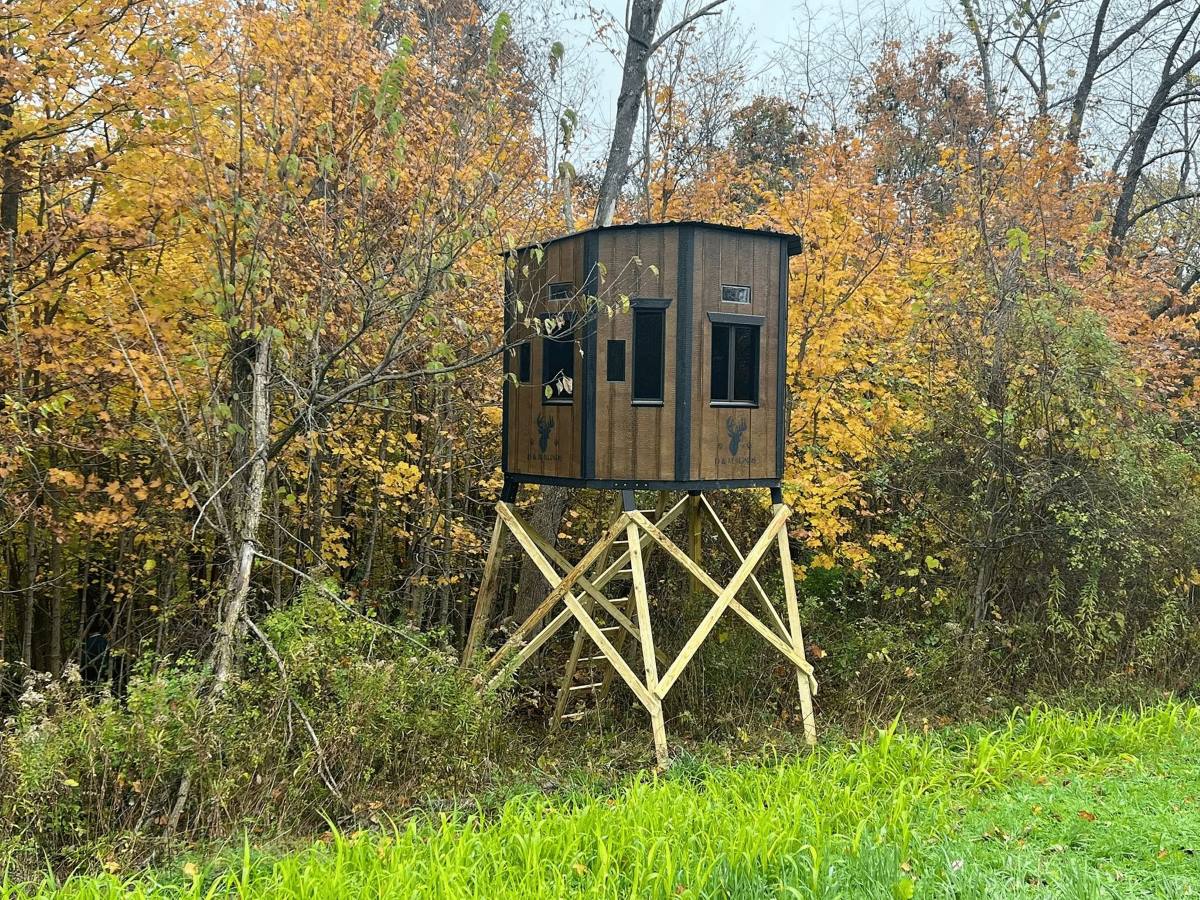How to Pick a Hunting Blind

How to Pick a Hunting Blind
If you’re like me, you started hunting with homemade wooden stands, sometimes even just a platform in the Y of a tree. Since then, we saw ladder stands, hang-on stands with climbing sticks, and then pop-up blinds followed by tower blinds. When it comes to the age-old debate of hunting blinds versus tree stands, both options have their advantages and their place. Tree stands offer elevated vantage points and versatility as they can be tucked discretely into timber and along field edges. Hunting blinds provide concealment and comfort on ground level or on platforms. Understanding when to opt for a hunting blind over a tree stand requires consideration of several crucial elements. In certain scenarios, such as hunting in rain, or cold weather conditions, a hunting blind is a solid choice, offering advantages that tree stands simply cannot replicate. Sometimes a blind is the best fit.
Ground Blinds
There are several types of pop-up blinds designed specifically for deer hunting, each with its own features and advantages. Pop-up tents were some of the first blinds I remember, before the hub styles were popular. Today, these are pretty economical to buy and these are lightweight and portable blinds that can be easily carried into the field. They are quick to set up and are often used by hunters who prefer to stay mobile and adapt to changing hunting conditions. These can be difficult to take down, so practice before hitting the field.
Hub-style blinds are the most popular type of pop-up blinds. They typically feature a hub system that allows for quick and easy setup and takedown. They come in various shapes and sizes and can accommodate multiple hunters or even a cameraman. Hub-style blinds often have multiple windows and shooting ports to provide good visibility in different directions. The advantages of a hub style blind are that you can easily pack them up and tote them around, and they will last several seasons if you want them to. With ground blinds, you should brush them, or set them up weeks before hunting. Deer will be wary of a blind. Luckily, they often have loops or straps for attaching additional branches, and grasses for added camouflage. Another advantage to blinds, is that you are not limited to finding a specific tree, as you would a tree stand.
Soft-Sided Tower Blinds
Soft-sided tower blinds are a hybrid of ground blinds and tower blinds. Generally, these have a solid metal frame and a heavy-duty cover that slips over the frame to complete the blind. These may come with customizable flooring options, or no floor at all. You can get a decent tower platform, and blind for quite a bit less than a hard-sided blind. However, there are some drawbacks to these.
For me, the biggest drawback is the soft-sided windows. These are usually zippered or velcro windows. They’re hard to open when a deer is in the field, and may blow your opportunity at a buck. Soft-sided blinds somewhat protect you from the elements, but they are not nearly as warm when compared with hard-sided tower blinds. Overall, soft-sided tower blinds offer hunters a cost-effective, portable, and comfortable alternative to traditional tower blinds or tree stands. They provide an excellent hunting solution for various environments and hunting preferences.
Tower blinds
Tower blinds are popping up all over Iowa’s landscape. Having a blind on a tower provides an elevated vantage point and gets you out of a deer’s line-of-sight, and more importantly they help keep wind and cold weather at bay letting you hunt. There are a plethora of different blinds on the market. The cheapest entry-level blinds are usually small, have no insulation, and gun only windows. To get a nicer tower blind, you will pay more, but you will have a lot more options to suit your needs. For instance, you can elect multiple shooting windows, along with options for long bow windows and horizontal windows. You will also note improved weatherproofing and insulation as well as camouflage patterns and features like, gear hooks, and shelves and customizable components for added versatility.
Look for blinds made from sturdy materials that can withstand harsh weather conditions and regular use. Ensure the blind has adequate windows or shooting ports for good visibility in different directions. If you plan to hunt with a partner or need extra space for gear or equipment, consider a larger blind with sufficient room inside. I’ve never heard anyone regret getting a blind that is “too big”. Ultimately, the best blind for deer hunting will depend on your personal preferences, hunting style, budget, and the specific conditions of your hunting area.
by Shannon Smith
July 2024
Looking for how to use your hunting blind successfully?
Here is the Digital version of the July issue of the Iowa Sportsman
Or if you were looking for our cattle/dairy side of things

